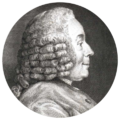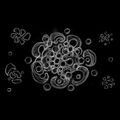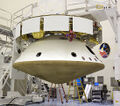Template:Selected anniversaries/November 26: Difference between revisions
No edit summary |
No edit summary |
||
| (3 intermediate revisions by the same user not shown) | |||
| Line 4: | Line 4: | ||
||1621: Ralph Agas dies ... surveyor and cartographer. No DOB. Pic: map. | ||1621: Ralph Agas dies ... surveyor and cartographer. No DOB. Pic: map. | ||
File:Jean-Jacques d'Ortous de Mairan.png|link=Jean-Jacques d'Ortous de Mairan (nonfiction)|1678: Geophysicist, astronomer, and biologist [[Jean-Jacques d'Ortous de Mairan (nonfiction)|Jean-Jacques d'Ortous de Mairan]] born. His observations and experiments will inspire the beginning of what | File:Jean-Jacques d'Ortous de Mairan.png|link=Jean-Jacques d'Ortous de Mairan (nonfiction)|1678: Geophysicist, astronomer, and biologist [[Jean-Jacques d'Ortous de Mairan (nonfiction)|Jean-Jacques d'Ortous de Mairan]] born. His observations and experiments will inspire the beginning of what | ||
||1810: William George Armstrong born ... industrialist who founded the Armstrong Whitworth manufacturing concern on Tyneside. He was also an eminent scientist, inventor and philanthropist. In collaboration with the architect Richard Norman Shaw, he built Cragside in Northumberland, the first house in the world to be lit by hydroelectricity. He is regarded as the inventor of modern artillery. Pic. | ||1810: William George Armstrong born ... industrialist who founded the Armstrong Whitworth manufacturing concern on Tyneside. He was also an eminent scientist, inventor and philanthropist. In collaboration with the architect Richard Norman Shaw, he built Cragside in Northumberland, the first house in the world to be lit by hydroelectricity. He is regarded as the inventor of modern artillery. Pic. | ||
| Line 28: | Line 26: | ||
||1898: Karl Ziegler born ... chemist and engineer, Nobel Prize laureate. Pic. | ||1898: Karl Ziegler born ... chemist and engineer, Nobel Prize laureate. Pic. | ||
File:Rear Admiral Deak Parsons.jpg|link=William Sterling Parsons (nonfiction)|1901: [[William Sterling Parsons (nonfiction)|American naval officer William Sterling "Deak" Parsons]] born. Parsons will serve as an ordnance expert on the Manhattan Project during World War II. | |||
||1918: Francis Harry Hinsley born . | File:Harry Hinsley.jpg|link=Harry Hinsley (nonfiction)|1918: Historian and cryptanalyst [[Harry Hinsley (nonfiction)|Francis Harry Hinsley]] born. Hinsley will work at Bletchley Park during the Second World War, and write widely on the history of international relations and British Intelligence during the war. | ||
||1922: Howard Carter and Lord Carnarvon become the first people to enter the tomb of Pharaoh Tutankhamun in over 3000 years. | ||1922: Howard Carter and Lord Carnarvon become the first people to enter the tomb of Pharaoh Tutankhamun in over 3000 years. | ||
Latest revision as of 16:29, 7 February 2022
1678: Geophysicist, astronomer, and biologist Jean-Jacques d'Ortous de Mairan born. His observations and experiments will inspire the beginning of what
1901: American naval officer William Sterling "Deak" Parsons born. Parsons will serve as an ordnance expert on the Manhattan Project during World War II.
1918: Historian and cryptanalyst Francis Harry Hinsley born. Hinsley will work at Bletchley Park during the Second World War, and write widely on the history of international relations and British Intelligence during the war.
Signed first edition of Fermentation stolen from the Louvre in a daring broad-daylight robbery by criminal mathematical generated by the Forbidden Ratio gang.
2011: The Mars Science Laboratory launches to Mars with the Curiosity Rover.



